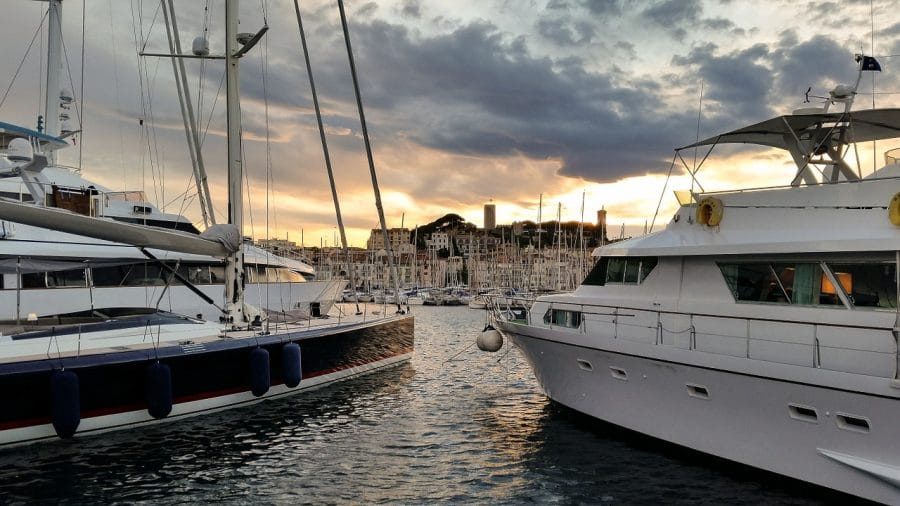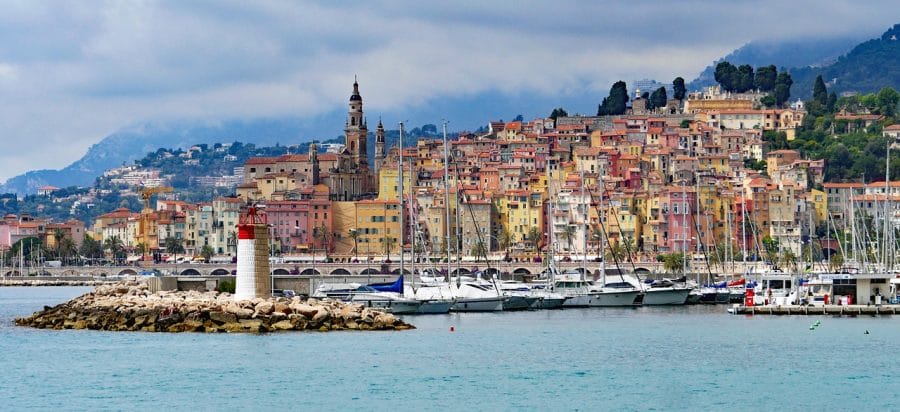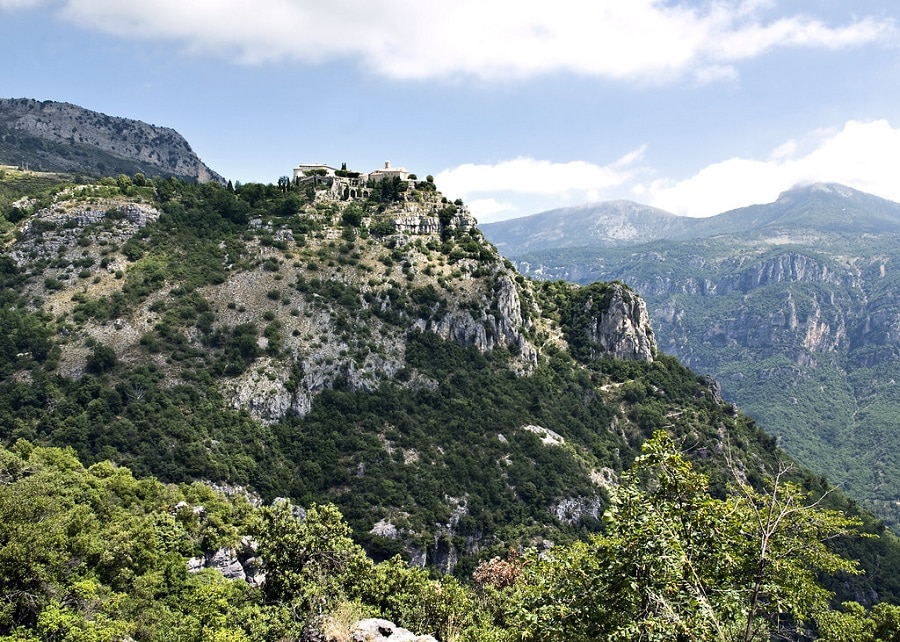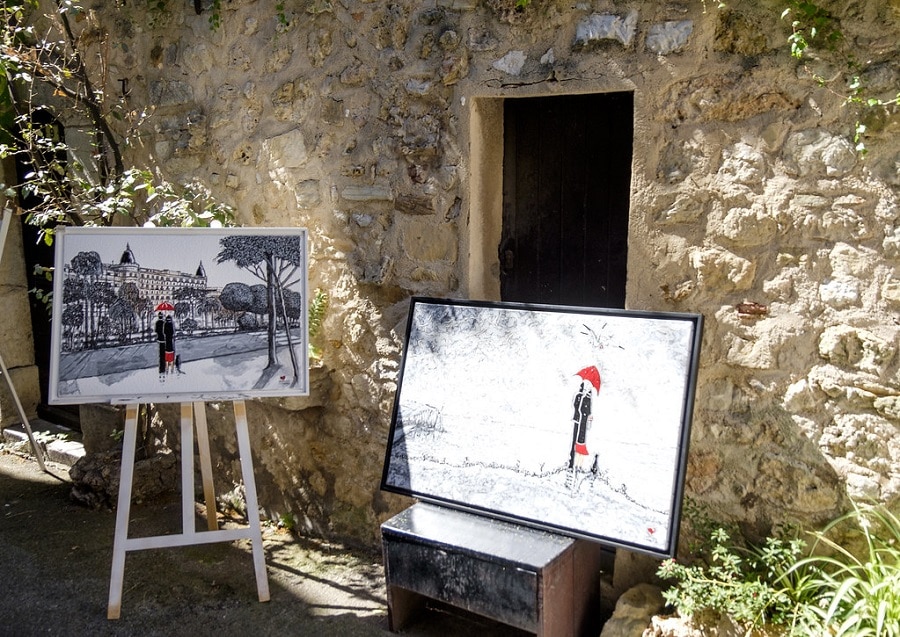What are the best things to do on the Côte d’Azur? What are the must-see sites to visit on the one we also call the French Riviera? Our 25 ideas for visiting the French Riviera!
To visit the French Riviera is to discover a magnificent French destination that stretches from Menton to Marseille. Even if it does not really have a clear and indisputable delimitation, the one we call the French Riviera includes many cities on the coast, 14 natural parks, Roman ruins, medieval villages and exceptional seabed. Don’t think of the French Riviera as just a place to spend your summer vacations either. Of course, the cities of the French Riviera are sunny during the summer months, while tourists stroll along the promenades and beaches, but winter on the French Riviera is one of France’s best kept secrets, with the first ski resorts only two hours drive from the coast.
In this comprehensive and regularly updated article, our editorial team lists the best things to do in this beautiful region: how to visit the French Riviera and make the most of your stay in the South of France!
1. Nice

Capital of the French Riviera, Nice is one of the most recognized and lively cities on the French Riviera. Stroll along the Promenade des Anglais and spend some time strolling through Old Nice, then head to the Castle Hill to admire impressive views of the city, the port and the mountains. Art lovers will enjoy the Chagall and Matisse museums and, of course, luxury shopping, nightlife and world-class restaurants will have no secrets for you.
2. Èze

A stone’s throw from Nice, the perched village of Èze is a must see on the French Riviera. This picturesque and paved village is perched on a cliff 430 meters above the Mediterranean Sea, offering a panoramic view of the Cap-Ferrat coast. Visit the Jardin exotique d’Èze, which is located in an ancient medieval fortress, to discover incredible panoramas of the French Riviera. For an unforgettable dinner with a view, book a table at Château Eza.
Afterwards, stay at the historic Gîte La Chèvre d’Or, where the balconies of the rooms seem to hang over the Mediterranean Sea. Just steps away is the Fragonard Perfume Museum, open to the public for guided tours. For those who love walking and hiking in nature, a panoramic path starts near the Fragonard Museum, goes down the hillside and leads to the beach. The village also has a beautiful 12th century church with an elegant neo-classical façade from the 18th century.
3. Saint-Tropez

A prestigious and emblematic seaside resort on the French Riviera that attracts tourists from all over the world, Saint-Tropez was once a modest fishing village. The city was made famous by the actress Brigitte Bardot in the 1950s while she was filming there. The town atmosphere of Saint-Tropez and its lush Mediterranean landscapes easily seduce its visitors. The historic village offers an atmosphere of yesteryear with its cobblestone streets, outdoor cafés and pleasant shady squares, while the picturesque port is filled with luxury yachts that delight the jet-set.
Yet, despite the chic restaurants and fashion boutiques, the Provencal atmosphere remains authentic in Saint-Tropez. You will see old people playing pétanque, families strolling around in the evening and local artists selling their paintings in the markets and along the port. Saint-Tropez is a pleasant place to explore with a relaxing seaside atmosphere where you can do many fun tourist activities.
4. Cannes

Made famous by its annual Cannes Film Festival, this chic destination is synonymous with splendor and wealth. If you come to visit Cannes during your stay on the French Riviera, take a stroll along the Croisette, a promenade where you can soak up the local life and admire the scenery and the spectacular view of the sea. Then take the Rue d’Antibes a block north for an afternoon of shopping in the city’s many boutiques. Cannes is also the perfect place to sip champagne and have lunch in an outdoor café.
While Cannes is appreciated for its exclusive character and high-end private beaches, there are also very affordable municipal beaches (Macé and Zamenhof beaches, sandy beaches with shallow waters) as well as public beaches with free entrance: The Gazagnaire beach, which is great for swimming, the Casino Beach with a long and wide stretch of fine golden sand, the La Bocca beach, which is not very crowded, and the Moure Rouge beach, which is one of the locals’ favorite beaches.
5. Villefranche-Sur-Mer

The colorful port of this picturesque village, with its coral-colored buildings, is one of the most beautiful fishing villages on the French Riviera. Villefranche is located on a hill and the buildings of the town seem to flow towards the port. Stroll through the narrow streets and cobbled stairs of the old center of the village (dating back to 130 BC) before visiting the 16th century Citadelle Saint-Elme, which offers a view of the Mediterranean Sea.
6. Menton

The sunny city of Menton enjoys a sensational location: it is the closest city to Italy to visit on the French Riviera, with a mild climate all year round. The warm weather allows the beautiful local flowers and citrus fruits to grow here. In this lush Mediterranean environment, the old town of Menton has a special Italian influence. You can start by taking the rue des Logettes and the narrow rue Longue, passing the old fortifications of the city. A staircase (Rampes de Saint Michel) leads to the terrace of the Place de la Conception with a breathtaking view of the sea. On the left stands the 17th century Basilica of Saint Michael the Archangel, with an altar created by Antoine Manchello in 1569.
Higher up is the Conception Chapel, built in 1685 in the Italian Jesuit style. For those seeking relaxation by the sea, the beach at Les Sablettes is ideal for sunbathing or swimming in the calm, temperate waters. The village also has two must-see museums: the Museum of Fine Arts with works by Chagall, Dali, Dufy and Picasso among others, and the Jean Cocteau Museum (in the port of Menton), which exhibits hundreds of paintings by Jean Cocteau who created many remarkable works there during the 1950s.
Another place of interest in Menton is its splendid gardens, including the Biovès Gardens, filled with sculptures, fountains, exotic trees and flowers, and the Serre de la Madone, famous for its shimmering pools and terraces adorned with exotic plants. The Val Rahmeh Botanical Garden is also home to a wide variety of palm trees and tropical plants, including avocado, banana and papaya trees.
7. Monaco

Recognized for its prestigious sailing race and its sublime natural landscapes, Monaco enjoys a special status on the French Riviera. This small coastal town is its own principality with a princely family, which embodies the glamour of the French Riviera. The Princely Palace of Monaco is located on what is affectionately called the “Rock of Monaco”, which houses a fortress built by the Genoese in 1215.
You can visit the Prince’s Palace to discover its treasures: a monumental staircase made of Carrara marble, precious 15th century frescoes depicting mythological scenes, the Mazarin Room, covered with ornate woodwork, and the Throne Room, with its majestic Renaissance fireplace. The Cathedral, the Chapel of the Visitation, which houses a museum of religious art, and the Oceanographic Museum with an exceptional aquarium, are other cultural curiosities of Monaco.
In an exceptional panorama of the Mediterranean Sea, the Exotic Garden seduces its visitors with its impressive landscaping and breathtaking views. Other breathtaking panoramas can be found along the Corniche. This spectacular cliffside road follows a winding path, with magnificent views of the Mediterranean at every turn. The emblematic port of Monaco, filled with luxury yachts, is an attraction not to be missed if you come to visit the French Riviera. The port is also the starting point for the Bateau Bus (water cab), which allows locals and tourists to travel around the port of Monaco.
8. Île de Porquerolles

With its peaceful turquoise waters and sandy shores, the island of Porquerolles has something paradisiacal and tropical about it. Although it is only 10 minutes by boat from the French Riviera coast, Porquerolles Island gives the impression of being much further away from the South of France. The north side of the island is lined with fantastic beaches, while the south side has steep cliffs and hiking trails along the creeks.
Among the popular activities during the summer, sailing, snorkeling and scuba diving are things to try around the island. Nestled in the center of the island is the small village of Porquerolles, with a wide choice of hotels and restaurants. To get to the island of Porquerolles, you have to take a shuttle boat from Hyères (about an hour drive from Saint-Tropez or less than 30 minutes from Toulon).
9. Saint-Paul de Vence

This picturesque medieval fortified village is situated on the top of a rocky hill, offering a breathtaking view of the French Pre-Alps and the Mediterranean Sea. Its reputation as a haven of peace has allowed this French Riviera village to attract several famous painters, including Marc Chagall, who is buried in the village’s historic cemetery. You will want to stroll through the narrow streets of Saint-Paul de Vence and stop at one of the many workshops and art galleries in the village, or shop for Provencal specialties. For a unique gastronomic experience overlooking the valley, try the Scandinavian cuisine of La Brouette.
10. Antibes

A must on the French Riviera, this famous seaside resort, located between Nice and Cannes, is surrounded by fortified ramparts overlooking the sea. You can stroll through the streets of the historic old town, and then browse the Provencal Market of Antibes open every day. You will find fresh seasonal products, meats, seafood, olives and cheeses, and you will linger at the craft market which is distinguished by its clothing, handicrafts and other art objects. Antibes was also the home of Napoleon Bonaparte (he was briefly imprisoned there during the French Revolution at Fort Carré).
The beaches of Antibes, both public and private, can be found in two main areas along the coast: the peninsula of Cap d’Antibes and Juan-les-Pins. The beaches of Antibes are renowned for their authenticity and beauty. The coastline also offers picturesque paths, such as the Chemin des Douaniers, which are perfect for hiking or walking. Juan-les-Pins owes its name to the pine groves that flourish in this region. For those who appreciate excellent French cuisine, the Antibes and Juan-les-Pins region has many gastronomic establishments and chic bistros with outdoor terraces.
11. Villa Ephrussi de Rothschild, Cap-Ferrat

Between Nice and Monaco, Cap-Ferrat is a narrow peninsula with peaceful seaside landscapes. The coast is dotted with luxury villas and vacation homes, although tourists rarely get a chance to see beyond the gates. One remarkable villa that is nevertheless open to the public is the Villa Rothschild built for Béatrice Ephrussi de Rothschild, daughter of the wealthy banker Baron Alphonse de Rothschild. Inheriting her father’s immense fortune in 1095, Béatrice created an incomparable residence in a sublime setting at the tip of Cap-Ferrat. The villa was designed in the style of an Italian palace, with a facade of delicate pastel pink. Beatrice’s exceptional taste is revealed throughout the interior and especially in the Grand Salon with its Louis XVI furniture and its sumptuous floral decoration.
After visiting the interior of the villa, you can take the opportunity to explore the gardens. Strolling through the villa’s beautiful gardens is one of the most fabulous things to do if you are spending your vacation in this part of the French Riviera. The nine gardens consist of a French garden with musical fountains, a Spanish garden with trellis patios, a rose garden with dozens of floral varieties and a Japanese garden with a traditional pavilion, a wooden bridge and a fish pond.
12. Gourdon

To get to Gourdon, the tour begins with a panoramic walk in the hills above the French Riviera, through the winding roads of the Gorges du Loup, lined with granite cliffs. Then stop for a break at the Saut du Loup waterfalls. The road alone is worth the detour, but also a visit to the impressively perched fortified village of Gourdon. You can stroll through its hilly streets, which feature beautifully preserved medieval white-stone buildings, and visit the feudal castle with its carved gardens. Afterwards, relax on the terrace of the Taverne Provençale to enjoy an extraordinary view of the French Riviera.
13. Vence

Charming city surrounded by ancient ramparts, Vence is located north of Cagnes-sur-Mer. Here you can explore the historic streets and visit the Cathedral of the Nativité-de-Marie. The church dates from the fourth century and houses a mosaic by the renowned artist Marc Chagall.
14. Ramatuelle

This small town built in the hills and surrounded by ramparts overlooks the bay of Pampelonne. Located only 15 minutes from Saint-Tropez, it is the ideal place to stay near the famous city of the French Riviera. The medieval village is a collection of old spiral buildings, with winding cobbled streets leading to beautiful squares. The characteristic Mediterranean architecture of the village is distinguished by its beige facades and brightly colored shutters. Scented jasmine, honeysuckle flowers and bougainvillea bloom throughout the village.
In the center of the town, the 16th century parish church, the Church of Our Lady, has a 14th century bell tower and an interior beautifully decorated with gold leaf statuettes. If you want to discover the atmosphere and the local culture of Ramatuelle, do not hesitate to visit the traditional Provencal market held on the Place de l’Ormeau on Thursday and Sunday mornings. Take the time to visit Château Volterra and taste the AOC Côtes de Provence wines in its vineyards.
15. Port Grimaud

Another charming Provençal town nearby is Port-Grimaud (about eight kilometers from Saint-Tropez). This seaside resort, which can only be visited on foot (even motorcycles are not allowed), is reminiscent of Venice, with its promenades and footbridges (parking lots are located outside the center of the resort). Most of the colorful houses along the canals have their own mooring place outside their front door. It is possible to rent motor boats to explore the canals. You can easily visit Ramatuelle and Port-Grimaud as well as other Provencal villages on a day trip.
16. Sainte-Maxime
Sainte-Maxime is a favorite vacation spot for families, protected from the winds by the Massif des Maures, creating a most pleasant atmosphere on the Gulf of Saint-Tropez. The town is renowned for its beautiful Mediterranean beaches and its many water sports activities, including scuba diving (there are at least 60 spots to explore), jet skiing and parasailing. To take your adventure to the next level, visit the Pelagos Sanctuary to learn more about initiatives to preserve local mammals such as bottlenose dolphins and pilot whales.
17. Fréjus

Founded by Julius Caesar in 49 BC, this ancient city located between Sainte-Maxine and Cannes is a must on the French Riviera for its impressive Roman ruins. Your first stop will be the Forum Julii, a site of Roman ruins that conceals the remains of an aqueduct, fortifications and an amphitheater dating back to the end of the first century. Fréjus is also home to the Cloister of the Cathedral of St. Leonce de Fréjus, a medieval structure built between the 5th and 14th centuries with painted ceilings and unique wooden beams.
18. Grasse

Perfume and beauty lovers should make Grasse an obligatory stop on their visit to the French Riviera and Provence. This medieval village, at the foot of the Alpes Maritimes, near the Loup valley, is surrounded by fields of lavender, mimosa, roses and jasmine flowers which are used to make perfumes. Grasse has several renowned perfume shops, such as Fragonard and Galimard, which are open to the public for guided tours. For those who love the gentle Provencal way of life, the old town revels in its romantic cobbled streets, quiet and shady courtyards and outdoor cafés. On sunny days, the city’s spectacular gardens inspire quiet walks. Some of the parks offer breathtaking views of the surrounding countryside.
19. Corniche de l’Esterel

Also known as the Corniche d’Or, it is a section of the N98 about twenty kilometers long that stretches from Fréjus to La Napoule through the French Riviera. The Corniche de l’Esterel is not only an exhilarating road with many hairpin bends, it is also a very panoramic road that offers a breathtaking view of the rocky coast and the brick-red Esterel mountains. Because of its spectacular views, the Corniche de l’Esterel is considered by some to be one of the busiest roads in Europe.
20. Mougins
 Passing through Mougins, a popular residential neighborhood near Cannes, Nice and the large Sophia-Antipolis business park, you may not perceive anything more than an elegant and upscale suburb. But in 1961, Picasso had a crush on Mougins and moved into a farmhouse that became a mecca for artists and art lovers – he died there in 1973. Over the decades, other personalities also colonized the city, including Cocteau, Man Ray, Léger and Christian Dior. Despite the current overbuilding, Mougins boasts extraordinary (but distant) views of the coast and a magnificent old town (which is a pedestrian zone) built on a hill.
Passing through Mougins, a popular residential neighborhood near Cannes, Nice and the large Sophia-Antipolis business park, you may not perceive anything more than an elegant and upscale suburb. But in 1961, Picasso had a crush on Mougins and moved into a farmhouse that became a mecca for artists and art lovers – he died there in 1973. Over the decades, other personalities also colonized the city, including Cocteau, Man Ray, Léger and Christian Dior. Despite the current overbuilding, Mougins boasts extraordinary (but distant) views of the coast and a magnificent old town (which is a pedestrian zone) built on a hill.
Here you will see some celebrities on vacation and many wealthy Parisians who have chosen to buy a pied-à-terre on the French Riviera. Wherever they go, famous chefs follow them, and Mougins is now a must in gourmet and gourmet circles. If you don’t come here especially for gastronomy, Mougins also has many galleries and a handful of posh cafés with pleasant terraces.
21. Mandelieu-la-Napoule

La Napoule is the small old-fashioned port village, Mandelieu the big fishing town that devoured it. Mandelieu is a city that abounds in sports facilities and hosts many sporting events: sailing regattas, windsurfing competitions, golf championships (there are two large golf courses in Mandelieu in the city center, and on the seaside), etc… A crowded marina is located in the shadow of some luxury hotels. La Napoule, for its part, offers the necessary quietness, ideal for a walk on the port side, a relaxed meal, a nap on the beach or a visit to its very special castle. Unless you are here for sun and surf, these two twin cities will be the perfect base for your outings to Cannes, Antibes and the Esterel. Indeed, Mandelieu’s easternmost beach coincides with the first and most fashionable beaches of Cannes, its glamorous neighbor.
22. Le Lavandou

In a magnificent setting at the foot of the Massif des Maures on a wide bay, Le Lavandou benefits from a sumptuous seaside setting. The lavender fields bloom here in season. Le Lavandou is located about 40 kilometers east of Toulon. This former fishing village is now a popular summer vacation spot. Its port is full of yachts and ferries leaving from here for the Hyères Islands. Along the Boulevard de Lattre de Tassigny, lined with palm trees, there are wide sandy beaches with a breathtaking view of the sea and the Hyères Islands. South of Le Lavandou, the wooded peninsula of Cap Bénat stretches into the sea with a lighthouse at its end. The N559 road, which runs east from Le Lavandou, leads to sandier beaches interspersed with rocky stretches.
23. Bormes-les-Mimosas

The charming medieval village of Bormes-les-Mimosas is only two kilometers from Le Lavandou. In a picturesque rural setting, the village runs along the slopes of a hill and enjoys an exceptional view (especially from the terrace near the ruins of the castle). The village has a beautiful 16th century church, the Chapelle Saint-François-de-Paule, on the Place de la Liberté. A statue commemorates the beneficent actions of Saint Francis of Paula during the plague of 1481. Also worth seeing are the bell tower of the Clock Tower and the church of Saint-Trophime, both dating from the 18th century. Beneath the church is the oldest part of the village, with steep streets known as “rompi-cuou”, a common feature of Provencal hilltop towns. Bormes-les-Mimosas is also famous for its flowers, especially the fragrant mimosa flowers that bloom throughout the village.
24. Parc national du Mercantour

Created in 1979, this vast national park encompasses seven alpine valleys and a total area of 685 km². Surrounded by deep valleys and dotted with jagged peaks, dominated by the Cime du Gélas (3143m), the third highest mountain in the Alpes-Maritimes, the Mercantour National Park is a paradise for outdoor activities: skiing and snowboarding in winter, hiking and biking in summer, but also many other experiences.
The Mercantour is also famous for its flora and fauna, including rare species such as the ibex, mouflon, golden eagle and wild grey wolf, which can be observed in the excellent Alpha wolf park near the village of St-Martin-Vésubie. The park is currently at the forefront of the debate on the return of the wild wolf to France: after more than a century of absence, the number of wolves is constantly increasing – a cause for rejoicing for conservationists, and deep anger for local breeders.
25. Les Gorges du Verdon

For a breathtaking spectacle, few sites in France can match the epic Gorges du Verdon. Nicknamed the “Grand Canyon of Europe”, the Gorges du Verdon extend 25 km across the limestone plateau of Haute-Provence to the foothills of the Alps. Established for millions of years on the banks of the Verdon, the gorges have been the centerpiece of the Verdon Regional Natural Park since 1997. With their steep, plunging cliffs – in some places 700 m high, twice the height of the Eiffel Tower – the gorges are a sanctuary for birds, including a colony of reintroduced griffon vultures.
The main gorge begins at Rougon, near the confluence of the Verdon and Jabron rivers. The most interesting starting points are Moustiers Ste-Marie, to the west, and Castellane, to the east.
When is the best time to visit the French Riviera?
The French Riviera is protected by hills to the west and the Mercantour National Park to the northeast, which means a mild Mediterranean climate all year round. Expect almost 300 days of sunshine, with showers around March and April, as well as in October and November. June and September are among the best months to visit the area, while July and August are the high season. Tourists crowd the beaches during the summer months, making it difficult to spread out your towel on the beach and to book a restaurant in the evenings.
Winter is far from being a good time to swim, but temperatures rarely reach 0°C. The big cities and some villages on the French Riviera organize traditional Christmas markets with local specialties and mulled wines. The 15 ski resorts in the region are open in season in December, the nearest ones (Auron, Isola 2000 and Valberg) being a little over two hours by bus from Nice train station or airport (1.50€ for a one-way ticket).
In February, Nice hosts one of the main winter events of the French Riviera, the Nice Carnival, during 15 days, with 16 floats parading on the Massena square. In Menton, the city organizes the Lemon Festival, a three-week festival featuring floats filled with more than 140 tons of local oranges and lemons.


Comment (0)